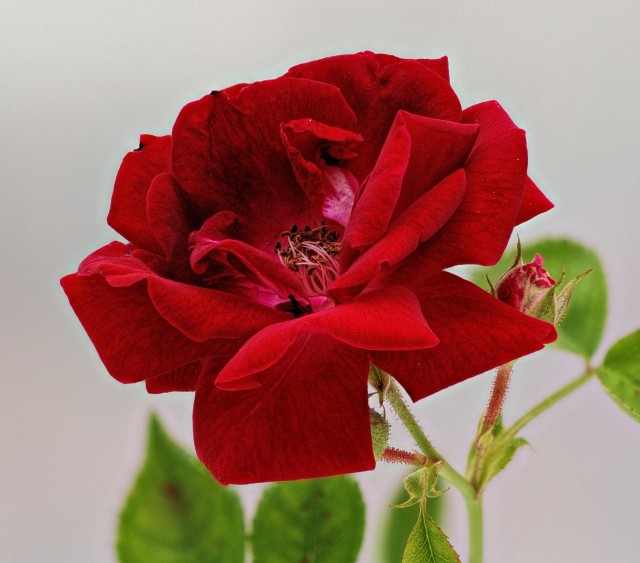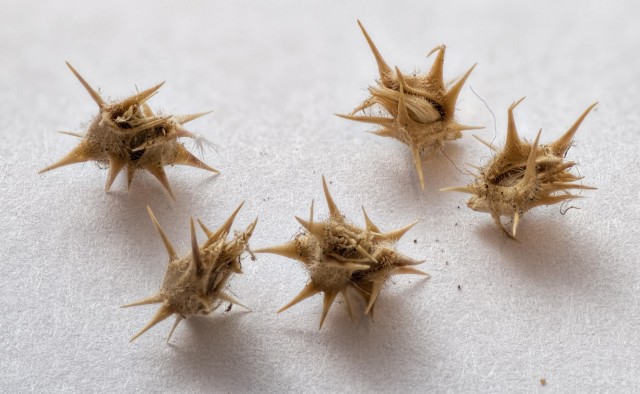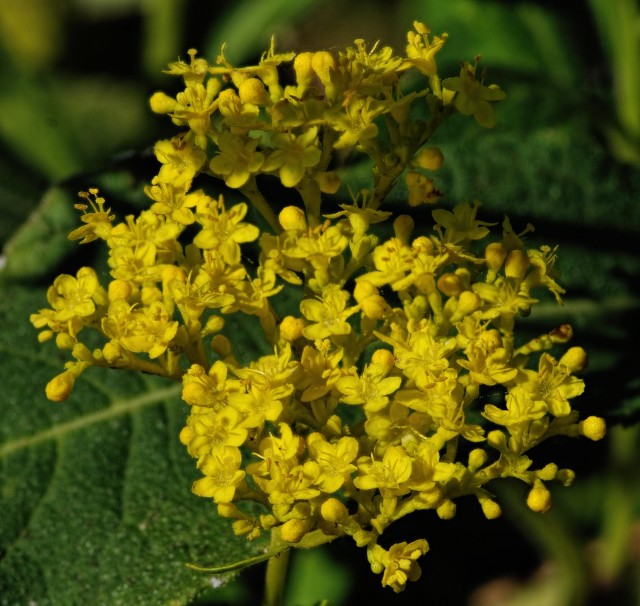I’ve been experimenting with the trial version of Zerene Stacker. The picture above of Dr. Huey, the most common rose in cultivation, ((Dr. Huey is frequently used as a rootstock for garden roses. Often suckers from the vigorous rootstock overwhelm the grafted variety and take over, producing a tremendous display of red in late spring. Dr. Huey rarely reblooms, though. This is the only year I’ve seen it in flower during later months.)) was assembled from 63 slices, each at f/5.6. Z Stacker works pretty well, but the final image tends to be grainy, and there are often some thread-like artifacts. I cleaned most of them up, but you can find a couple near the right edge of the picture in the full-sized version. (Click to embiggen.)
These Cenchrus longispinus burrs were collected from my socks. The image was compiled from 22 slices.
While it’s easy to take the series of frames for image stacking in an indoor studio, in the field it’s not so easy. This picture of Patrinia scabiosifolia, one of the seven flowers of autumn, was made from three exposures. I could have used one more to get the entire inflorescence in focus, but the wind was starting to rise and I did well to get three useable frames.



